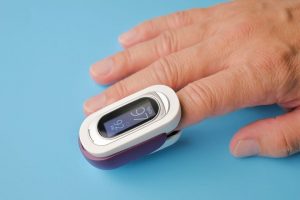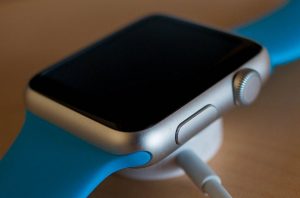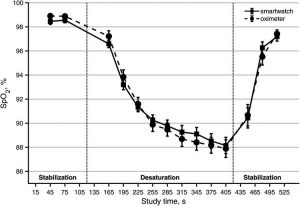Are Blood Oxygen measurements from Smartwatches accurate enough?
In recent years, wearable technology has become increasingly popular, and many wearables now include blood oxygen measurement capabilities.
Blood oxygen (also commonly known as SPO2) levels can be a useful metric for assessing respiratory health, and these wearable devices have the potential to provide users with valuable information about their health status.
SPO2 measurements can be very critical for those who suffer from chronic conditions such as COPD, atrial fibrillation and Sleep Apnea. Just like pulse oximeters, most wearables use a technique that involves shining light through the skin and measuring the amount of light that is absorbed by oxygenated and deoxygenated blood. This information is then used to calculate the percentage of oxygen saturation in the blood. However, while finger oximeters use transmissive oximetry, smartwatches use reflectance oximetry.

While pulse oximetry is a well-established method for measuring blood oxygen levels, there are some limitations to its accuracy when used in wearable devices. One of the main challenges is ensuring that the device is positioned correctly on the user’s body. For example, if the device is too loose or too tight, it may not be able to measure blood oxygen levels accurately. Additionally, factors such as skin color, temperature, and altitude can all affect the accuracy of blood oxygen measurements.

The early reviews of the accuracy of SPO2 for wearables were mixed, but new research has come out strongly in favor of these devices. Recently a very comprehensive study was published by the National Institute of Health, where SPO2 readings were compared between an Apple Watch Series 6 and a Commercial Pulse Oximeter. The average absolute difference or bias between smartwatch and oximeter SpO2 measurements, evaluated for all pooled data, in two ranges and at the individual study times, was less than 1% SpO2.

Despite these limitations, many experts believe that wearable blood oxygen measurements can still be useful for tracking changes in blood oxygen levels over time. For example, if a user notices that their blood oxygen levels are consistently low, this may be a sign of an underlying respiratory condition, and they can seek medical attention. Additionally, if a user notices a sudden drop in blood oxygen levels, this could be a sign of a medical emergency, and they can take action to seek help.
In conclusion, while blood oxygen measurements from wearables are quite accurate, Users should ensure that they are using them correctly to obtain the most accurate measurements possible. As with any health-related concern, it’s essential to seek medical attention if you have any concerns about your blood oxygen levels or respiratory health.
If you are interested in this topic, please follow us here, and on Facebook and Instagram. We are a startup focused on enabling caregivers to manage the conditions of their loved ones and help them to lead a healthy life. You can also visit https://karecirc.com for the latest updates on our Android and IOS apps which are meant to harness the power of wearable technology for senior health.
Smartwatches have measured SPO2 for years. But is this useful?
Accuracy of Apple Watch Oxygen Saturation Measurement in Adults: a Systematic Review

No comment yet, add your voice below!